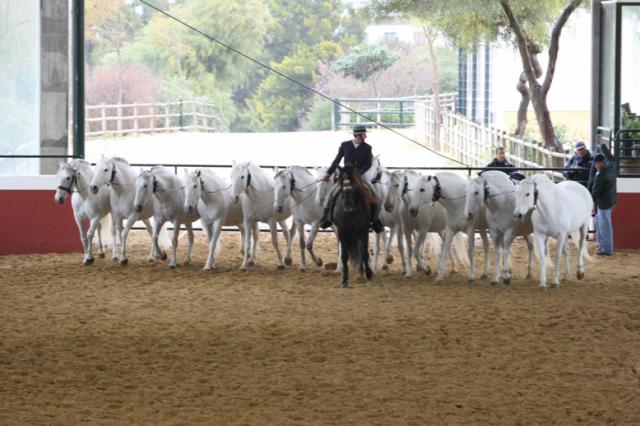|
Carthusian Spanish Horse
The Carthusian horse, also known as in Spanish, is a bloodline group within the Purebred Spanish horse (PRE). Its lineage can be traced back to 1476, which supports claims that its breed registry is one of the oldest in the world. The Carthusian lineage originates from a Gray horse, gray stallion named Esclavo, who became the property of the Carthusian monks of Andalusia. The monks successfully developed this breeding program, which gained widespread recognition throughout Europe in the 18th century. Morphologically, the Carthusian horse is characterized by a lighter body and a straighter head profile compared to other PRE lines, often exhibiting bony protuberances. The predominant coat color of the Carthusian horse is gray. This breed is commonly utilized in dressage and is well-suited for combined driving. Carthusian breeding is primarily concentrated in its region of origin, Andalusia, particularly around Jerez de la Frontera, Badajoz and Córdoba, Spain, Córdoba. Etymology ... [...More Info...] [...Related Items...] OR: [Wikipedia] [Google] [Baidu] |
Purebred Spanish Horse
The Andalusian, also known as the Pure Spanish Horse or PRE (Spanish language literally translates to "Spanish pure breed". This name is sometimes capitalized when used in English-language publications, but is all lower-case in Spanish, which does not capitalize adjectives derived from proper nouns.), is a horse breed from the Iberian Peninsula, where its ancestors have lived for thousands of years. The Andalusian has been recognized as a distinct breed since the 15th century, and its Equine conformation, conformation has changed very little over the centuries. Throughout its history, it has been known for its prowess as a horses in warfare, war horse, and was prized by the nobility. The breed was used as a tool of diplomacy by the Spanish government, and kings across Europe rode and owned Spanish horses. During the 19th century, warfare, disease and crossbreeding reduced herd numbers dramatically, and despite some recovery in the late 19th century, the trend continued into the ... [...More Info...] [...Related Items...] OR: [Wikipedia] [Google] [Baidu] |

